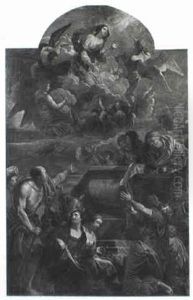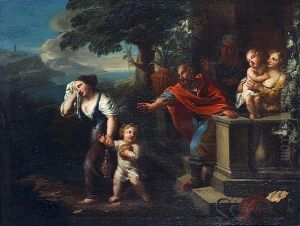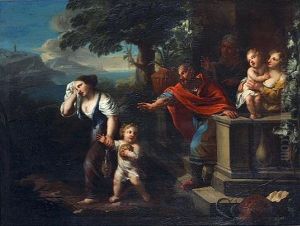Guglielmo Borremans Paintings
Guglielmo Borremans was an Italian painter born in 1672 in Antwerp, then part of the Spanish Netherlands. His work is primarily associated with the Baroque period, a style known for its exuberance, grandeur, and emphasis on dramatic, often emotional, expression. Borremans' early life and training in Antwerp, a city renowned for its artistic heritage, significantly influenced his development as an artist. The city was home to Peter Paul Rubens, Anthony van Dyck, and Jacob Jordaens, whose works defined the Flemish Baroque style that likely impacted Borremans' artistic formation.
In his early career, Borremans moved to Italy, which was a common destination for Northern European artists seeking to advance their skills and careers. Italy, with its rich artistic traditions and the presence of major works from the Renaissance and Baroque periods, provided a fertile ground for Borremans' development. He settled in Sicily around the early 18th century, where he became an important figure in the local art scene. His work in Sicily represents a significant part of his oeuvre, with commissions for religious and decorative paintings in churches and public buildings.
Borremans' style is characterized by its dramatic use of light and shadow, a hallmark of the Baroque, and his ability to convey deep religious and emotional themes through his subjects. His paintings often featured biblical and mythological scenes, portrayed with a dynamic composition and rich, vibrant colors that captured the viewer's attention. Despite his Flemish roots, his work in Italy and particularly in Sicily, absorbed the local styles and influences, which he blended with his Northern European sensibilities to create a distinct artistic expression.
Throughout his career in Sicily, Borremans received numerous commissions, which allowed him to contribute significantly to the Baroque artistic landscape of the region. His legacy, however, has been somewhat overshadowed by his more famous contemporaries and the changing tastes in art that followed the Baroque period. Nevertheless, his work provides a fascinating insight into the cross-cultural artistic exchanges between the Flemish and Italian traditions during the Baroque era.
Guglielmo Borremans passed away in 1744 in Palermo, Sicily. Although not as widely recognized today as some of his peers, his contributions to the Baroque style and the blending of Flemish and Italian artistic traditions remain an important part of the art historical narrative of the period.


